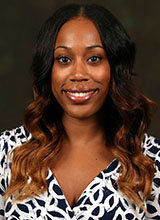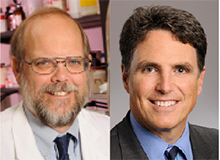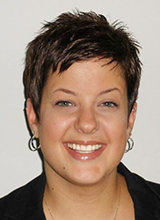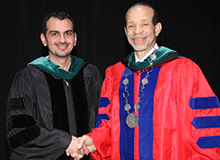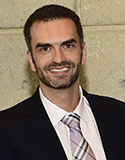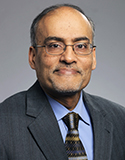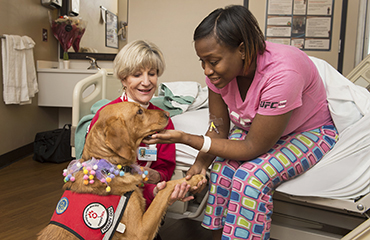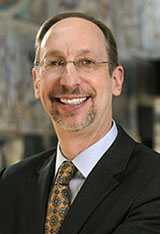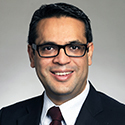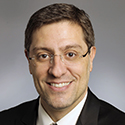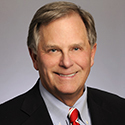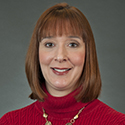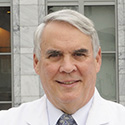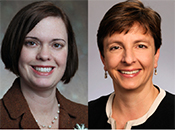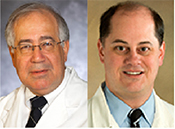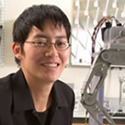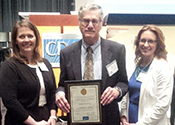
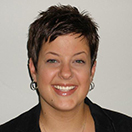
|
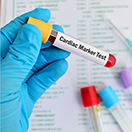
|
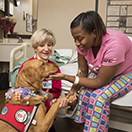
|
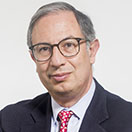 In brief |
| April 27, 2016 | ||||||||||||||||||||||||
Optimizing workflow to improve service and efficiency
First, they had to kill the Unicorn. Aviana Ingram, a business practice manager in cardiac outreach, and Kate Hegge, a consultant from HIMformatics, are part of a team charged with improving workflow in the heart and vascular service lines. And the Unicorn, as befits its name, was a rare and legendary creature—an Excel spreadsheet to track data on structural heart patients that had worked well for years. The office was quite attached to it.
But as new technologies had developed and patient loads had increased, well, the Unicorn was simply not able to keep stride with the times. When it corrupted one day, requiring many hours to repair, Ingram and Hegge saw their chance to prove that there were better, more efficient ways to leverage the electronic medical record and lighten the office workload. The goal in workflow optimization is not only to streamline and automate as many administrative chores as possible but also to create a system that combines clinical and research data—a cardiovascular data mart. The two faced some resistance, which is only natural when you're asking already busy employees to change their usual way of doing things. "We definitely wanted to make sure we weren't creating more work for people," Ingram says. "We spoke with divisions at length about their current workflow, what their needs were, and where the 'pain points' were, really getting into the weeds with them."
Both transplant and surgery had already seen great progress through similar data mart projects under the direction of then transplant director Chris Larsen, says surgery chair John Sweeney, who is leading the project in heart and vascular with cardiology division director Robert Taylor. After transplant and surgery, Emory's Brain Health Center (BHC) was next to implement changes, seeing immediate results in the Neurology Cognitive Disease Clinic, for example, from new strategies such as mPage, a customizable tool in EeMR that aggregates relevant patient information in one place, to give the clinical team easier access to the right information at the right time, according to Kevin Clark, BHC executive administrator, who says that mPage eventually will be customized and rolled out throughout the BHC. "For example," says Hegge, "the cardiovascular biorepository collects blood samples from patients along with manually recorded clinical, social, and psychometric data, some of which exists already in the data warehouse. We can now collect the clinical data attached to a blood sample for research at the same time." The workflow optimization team first interviews stakeholders in each division—a representative group of physicians, NPs, PAs, research coordinators, administrative assistants, and nurses—to understand their work needs and goals at a high level. Then they focus on pain points/opportunities. "We aren't trying to narrow options at this point. We ask them, ‘What would this look like in a perfect world?' " says Ingram. "We do a lot of listening." Sometimes it pays off to go after low-hanging fruit immediately: for example, if the same information is being handwritten or typed in more than once, they set forms to auto-populate and orchestrate information dumps. "This alone can save employees hours every week," says Ingram. The team also looks at broader goals, such as congenital heart's desire to have better longitudinal management of patients, a well-managed referral pipeline, and improved scheduling. "Some problems require a reporting fix, others a workflow fix, and others an IT fix," says Hegge. "And some require all three!" Results might include drafting standard operating procedures, automating charge reminders, implementing day-before schedule reviews, and training, coaching, and supporting staff. Strategic initiatives are broken up into short- and long-term goals. For instance, aortic chose as a short-term goal improving access for referring physicians, hospitals, and patients and as a long-term goal, increasing philanthropic support. Then potential short-term actions were identified, such as recruiting two dedicated nurse navigators and establishing an outpatient follow-up clinic. "Initially when you start talking to people about the process, there's resistance. They think, 'I don't want my workflow changed.' It can be off-putting," says Sweeney. "But now, when other groups see what is being done, they get excited and want to know when it will be their turn."—Mary Loftus Capturing patient data between office visits
When an iPhone app (mPower) to recruit Parkinson's patients for a study was launched last year, it created a stir in the neurology community. Emory movement disorders specialist Jaime Martin was among those who saw great value in the app, which allowed researchers to follow daily fluctuations in patients' symptoms. It gave her and her colleagues an idea—what if study participants could share their research data with their physicians to improve their care? That capability is here, thanks in part to Martin, who consulted with Apple on development of a new software framework that allows mPower app users to share personal study data with their physicians, nurses, and family caregivers. The framework, called CareKit, turns research apps like mPower into valuable health care tools for patients and physicians. CareKit expands the capabilities of ResearchKit, the Apple platform used to create the mPower app in 2015. "The mPower app was designed so that Parkinson's patients could track their symptoms at home to see how they were doing from day to day and week to week," Martin says. "We realized there was a lot of potential to use it for patient care. When physicians see their patients for 20 or 30 minutes at a time, it's hard for them to know in detail what's happened for the past six months. The mPower app can track what happened to a patient three months ago at lunch time." As development of CareKit mPower moved forward last fall, Martin advised Apple on what measures physicians needed to make better care decisions about their patients. "We wanted an app that could better track changes over time. Parkinson's symptoms can change hourly," she says. "If a patient takes their medication in the morning and their symptoms worsen at the end of the day, that's important for us to know." While patients have used smartphone apps to share information with doctors for some time, much of the information they provide is self-reported, such as daily intake of food or medicine. Because ResearchKit and CareKit apps target specific health conditions, they provide higher quality data for end-users, Martin says. The mPower app, for example, uses iPhone features to measure Parkinson patients' walking gait, voice, dexterity, and memory to provide doctors with objective data on their condition. A key goal of the app is to put more information in the hands of patients—even when their fingers lose dexterity. "The app is self explanatory and user friendly," says Martin. "Patients just tap a button on their iPhone screen to use it." "We want patients to be able to use mPower easily at home," she adds. "The more knowledge that patients and their caregivers have about Parkinson's, the better they can relay information to us so that we can make more educated decisions about their treatment." —Pam Auchmutey Strong showing at American College of Cardiology meeting
Emory heart research was well represented at the American College of Cardiology (ACC) Annual Scientific Session in March: • Vinod Thourani (chief of cardiothoracic surgery at Emory University Hospital Midtown and co-director of the Emory Structural Heart and Valve Center with cardiologist Vasilis Babaliaros) reported one-year outcomes comparing transcatheter aortic valve replacement (TAVR) with traditional surgical aortic valve replacement. Intermediate-risk patients receiving TAVR with the latest-generation SAPIEN 3 valve fared better than those who had surgery. Read more.
• Cardiology research fellow Muhammad Hammadah reported that people with restricted blood flow to the heart in response to psychological stress have perpetually higher levels of troponin, independently of whether they are experiencing stress or chest pain at that moment. (Troponin is a protein biomarker indicating recent stress or damage to heart muscle.) Read more. Hammadah also was a top finalist in the ACC's Young Investigator Award competition.
• Cardiology research fellow Salim Hayek reported on ability of a five-biomarker panel to predict the risk of cardiovascular events (death, heart attack, hospitalization for heart failure) in a group of patients who underwent cardiac catheterization at Emory hospitals. Read more.
• Arshed Quyyumi (cardiology) reported that heart failure patients who received experimental stem cell therapy had a reduced rate of death, hospitalization, and unplanned clinic visits over the next year, compared with a placebo group. Read more. Therapy dogs comfort oncology patients
On any given Tuesday, visitors to the Emory Saint Joseph's Hospital (ESJH) oncology unit are likely to pass a Golden Retriever in the hall. Or spot a Brittany Spaniel in a patient's room. Or pause to pet a Labradoodle. These canine volunteers from Happy Tails Pet Therapy, accompanied by their owners, bring comfort and healing to patients battling cancer. The Happy Tails program came to Emory five years ago when volunteers and their dogs began visiting patients undergoing chemotherapy or radiation in the outpatient unit of Winship Cancer Institute at ESJH. Patients quickly bonded with their four-legged visitors and often scheduled their treatments around the Happy Tails visitation schedule. Spurred by this success, the nursing leadership team at the hospital pushed to bring the program to their relatively new inpatient oncology unit. They found an enthusiastic supporter in hospital CEO Heather Dexter. Dexter first encountered the pet therapy of Happy Tails from the receiving end. Her brother was a patient at Shepherd Center and then Children's Healthcare in 2000 and 2001. In both of these institutions, he got regular visits from friendly dogs from Happy Tails. "Even though Patrick was unable to communicate with the dogs, they instinctually knew how to interact with him," says Dexter. "But more important, they were calming to him and brought us all joy." Today, oncology patients at ESJH eagerly anticipate the animals' weekly arrival. Those requesting a visit from Happy Tails have a paw print placed on the door to their room, a welcome sign for the pet therapy teams to enter. The nursing staff hopes to expand the program to other units of the hospital. "Patients connect so differently to animals," says Patricia Guasch, unit director of the inpatient oncology unit. "I've seen how the interaction with the dogs is healing for the whole person—mind, body, and spirit. It's wonderful to watch." Happy Tails canines also visit other Emory facilities, including Emory University Hospital, Emory Johns Creek Hospital, Emory Rehabilitation Hospital, and Winship Cancer Institute. |
| From the Executive VP
Countable or not, it all counts
How does one quantify hope? The 2016 Woodruff Health Sciences Center At-a-Glance publication does an admirable job capturing WHSC "by the numbers." It provides an impressive snapshot of many of the tangible ways in which we serve people in need, pioneer tomorrow's health advances, prepare the finest health professionals in the country, and benefit our community. At-a-Glance is a comprehensive resource of our extraordinary measures of success, including the number of people we treat and the number we train; charity care valued in the tens of millions of dollars and community impact measured in the billions; one of the state’s largest workforces and scores of partners who complement and extend our outreach. Taken together, the value of these numbers is incalculable. Their sum adds up to advances in health and healing that save and improve lives and that provide help and hope for the people who need it most. While there is much we can count, there is even more that we do that counts, but cannot be counted! Please direct questions and comments to evphafeedback@emory.edu.
Mexican government honors del Rio
The Mexican government selected Carlos del Rio (chair of global health, Rollins) to receive the 2016 Ohtli Award to recognize "his magnificent performance over many years in health sciences in addition to his contributions in medical research that have benefited the Mexican community." Read more. Vaccines: NIH director cites Rollins study
In a recent blog post, NIH Director Francis Collins cited a study led by Saad Omer (epidemiology and global health), confirming that recent outbreaks of measles and pertussis have been fueled by some parents' refusal to vaccinate their children. The study was published in the March 15 issue of JAMA. Notable
Volkan Adsay (pathology) is the new president of the US and Canadian Academy of Pathology, the premier organization for academic pathologists in North America. Read more.
Don Brunn has transitioned out of his role as president and COO of Emory Clinic to become senior VP for network development for Emory Healthcare, responsible for evaluating, designing, and negotiating business endeavors, including system-to-system relationships.
Nursing faculty Rasheeta Chandler and Lisa Muirhead will be inducted into the American Association of Nurse Practitioners in June. Read more.
Tanya Cossett, corporate director of IT solutions for Emory Healthcare (EHC), has been appointed acting chief information officer for EHC.
Robert Guyton (director of cardiovascular surgery) received the Distinguished Service Award from the American College of Cardiology. Read more.
Heather Hamby, executive associate dean and COO for the medical school, has been appointed interim president of Emory Clinic and the business and financial lead for Emory's physician groups. Maureen Haldeman, VP of operations for Physician Group Practices (PGP) and chief administrative officer for Emory Specialty Associates, has been appointed interim COO of PGP. She reports to Hamby.
Ira Horowitz (ob-gyn) has a new position combining his role as associate director of Emory Clinic and a new role as executive associate dean in the medical school, in which he will coordinate faculty affairs and development across all entities of Emory Medicine. Chad Ritenour (urology) will assume Horowitz's previous role as chief medical officer (CMO) of Emory University Hospital.
Lena Ting (biomedical engineering) has been inducted into the American Institute for Medical and Biological Engineering College of Fellows. Read more.
Emory's Building Interdisciplinary Research Careers in Women's Health (BIRCWH) program selected three faculty members for the first cycle of the BIRCWH scholars program: Erin Ferranti (nursing), Vas Michopoulos (psychiatry), and Sandra Safo (public health). Read more.
The CDC recently awarded the National Ebola Traininig and Education Center (NETEC) with the Excellence in Partnering - Domestic Award for collaboration among NETEC members. Read more. Events May 1-3: Bridging the Sciences: Zika Virus. Emory Conference Center. More info. May CEO forums: May 5, 3-4 p.m., ESJH auditorium. May 26, 1:30-2:30 p.m., EUH auditorium. May 18: 3rd Annual Advancing Health Care Quality Research at Emory. 8:30-5. SOM Auditorium 110 and lobby. June 6: NInth Emory Quality Conference. Relieving Patient Suffering and Enhancing the Joy in Providing Care. WHSCAB auditorium and broadcast to nine other sites. 1-4:30 p.m. To register, EHC employees can log into HealthStream Learning Center and type 6034 in search box. Non EHC employees can register here. Please contact Emily Hulkower with questions about poster submissions. June 12-17: Emory Exposome Summer Course. Registration closes May 1. Please contact Kristine Dennis or Gary Miller with questions. |


